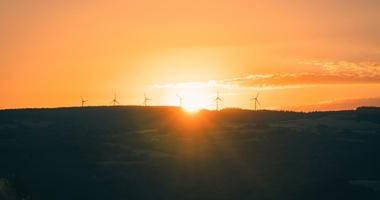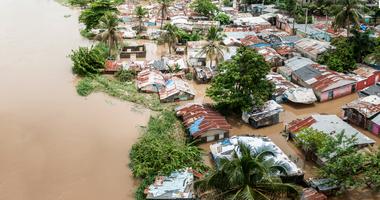
What is a Green Bank?
Green banks fill an important state and community level need for clean energy and efficiency funding to bridge the gap and make green opportunities more appealing to both individuals and investors.
5 min read
With the world growing warmer and each year breaking new heat records, urgent action to end the climate crisis cannot wait. It’s our responsibility to do everything we can to prevent the worst of it.
Every person and every community has a right to breathe clean air, live free from the threat of toxic pollution, access healthy food, and be part of the prosperous clean energy economy of tomorrow.
Getting there is going to require everything we’ve got. This is a unique moment of possibility, one where we have the chance to think big and act boldly.
One important piece of the puzzle is finance. How are we going to fund the transition to a better, more sustainable climate future?
Governments the world over have been asking themselves this very question, debating the means of paying for large-scale climate adaptation and mitigation and for the loss and damage already created by the climate crisis.
But what about at the state or even community level? Global climate finance discussions can feel very far away from what’s happening just a few blocks away on Main Street.
This is often where “green banks” enter the equation.
What is a Green Bank?
“Green banks are mission-driven institutions that use innovative financing to accelerate the transition to clean energy and fight climate change,” according to the Coalition for Green Capital.
They are typically public or quasi-public, meaning they are most often established by governments or government-affiliated programs, though they can also be founded as independent non-profit entities.
When we say they are “mission-driven,” we mean that they “have a mandate to advance the deployment of clean energy,” according to the US Environmental Protection Agency (EPA), rather than an imperative to maximize profit like a conventional bank.
Green banks use a variety of financial tools, such as loans and bonds, to make clean energy projects more affordable and appealing to investors.
They work by providing loans and using the revenue from loans being paid back to make even more investments — sort of like a snowball rolling down a hill, getting bigger and bigger as it picks up more and more of the white stuff.
Green banks are also an effective tool for mobilizing private investment. In this way, they can help to overcome the financial barriers that often prevent clean energy projects from being developed.
“By focusing on underserved market sectors, green banks can complement existing clean energy programs by targeting market gaps. They can address existing barriers that otherwise prevent the expansion of clean energy, particularly within underserved communities,” the EPA writes. “Many green banks have tailored their programs to improve access to clean energy projects for low- and moderate-income (LMI) communities.”
Where Does the Money Come From?
Funding for green banks can vary dramatically from bank to bank, depending on its formation, mission, structure, and goals, though in most cases it comes from a diverse mix of public and private sources.
“Depending on the state, green banks can access public funding, raise capital in private markets, and/or receive a steady stream of revenue through utility bill surcharges,” the National Renewable Energy Laboratory says.
Local and state governments can allocate funds directly to establish and underwrite a green bank. This governmental funding often comes via the legislation establishing the bank itself, and can be a one-time appropriation or ongoing support over time from a varied source of revenue streams.
As mentioned above, in some instances, utility bills can include a small ratepayer surcharge specifically dedicated to funding a green bank.
There are also a variety of private funding sources that green banks can turn to.
Philanthropic and other environmentally minded non-profit organizations can provide money to launch or support a green bank and its initiatives, and an established bank can issue bonds to raise capital from private investors who support the bank’s environmental goals, while also seeking a return on their investment.
Partnerships with private lenders like commercial banks and other financial institutions can also provide access to additional startup capital.
And of course, once a green bank is up and running, repayments on loans and other successful investments begin to flow in and that capital is repurposed to support new projects.
Once it’s off the ground, this revolving capital approach allows a green bank to maximize its impact even when its initial resources were limited.
Benefits of Green Banks
The potential for positive impacts across environmental, economic, and social sectors make green banks valuable tools for building more sustainable and resilient communities.
Using limited public funding to attract private investment in clean energy, energy-efficient housing, and other green projects, green banks make green projects more affordable and accessible, which ultimately grows the market for more and more clean energy projects.
They can be particularly beneficial to historically underserved communities, including low- and moderate-income (LMI) communities and communities of color.
Green banks’ mission-driven approach allows them to prioritize investments in underserved communities, ensuring fair access to clean energy solutions and addressing the unique energy burdens faced by LMI households.
At the same time, investments in things like flood mitigation and energy-efficient infrastructure can increase community resilience to the extreme weather impacts we’re already seeing as temperatures continue to rise and our climate changes.
And there are, of course, environmental benefits to green banks’ mission-driven focus on clean energy.
By financing clean energy projects, green banks help communities move away from the fossil fuels driving the climate crisis. This leads to cleaner air and water in the short and long-term, benefitting public health and reducing the health-care costs associated with ongoing environmental degradation.
Green banks’ ultimate goal is to work to help reduce greenhouse gas emissions and mitigate the climate crisis. But for the average Joe, their bottom line looks even better.
Green banks can help communities lower energy bills by funding energy efficiency measures and renewable energy generation, saving individual households and businesses money.
They can also help to attract new businesses and green investment to a region, bolstering the local economy. The clean energy sector is a growing job market, and by investing in associated projects, green banks can assist in the creation of many new jobs in communities just like yours.
Overall, green banks are a powerful tool for promoting clean energy investment and helping communities see very real and equitable growth – and they can play a key role in advancing the transition to a low-carbon economy.
Learn More
There’s no getting around it: The changes we’re talking about are an investment. In infrastructure. In communities. In new technologies. In efficiency measures. And so much more.
But this investment is also one that could pay impressive dividends for individuals of every social class, color, gender, and creed.
It has the potential to lift us all up together.
And green banks are just one piece of the puzzle of how we get there.
Ready to learn more about the future we’re reaching for? Join us in New York City this April for a training event unlike any other.
From April 12-14, take bold climate action, join forces with fellow environmental advocates, and make sure all of our voices are heard in demanding a cleaner, greener future at our latest Climate Reality Leadership Corps training.
Be part of the movement for a better tomorrow. Join us in NYC this April.




